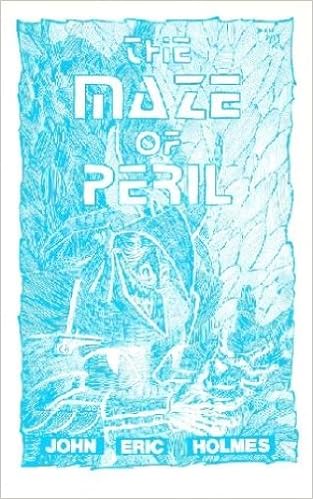 |
Ariel's Song from the Tempest as illustrated by Virgil Finlay |
A new monster for your Portown, Saltmarsh or other coastal D&D campaign, inspired by this thread on ODD74, which shows a photo of a skull undergoing a "sea change". As a bit of further explanation, the modern expression "sea change" originates in Shakespeare's The Tempest (click on the image above to enlarge it so you can read the full quote), which was memorably referenced by Gary Gygax in the Example of Play in the original AD&D Dungeon Masters Guide. I've taken it one step further by using it as the basis for a monster.
The Sea-changed
Move: 60 feet/turn
Hit Dice: 1 + 1
Armor Class: 5
Treasure Type: special
Hit Dice: 1 + 1
Armor Class: 5
Treasure Type: special
Alignment: lawful evil
Attacks: 1
Damage: 1d6
Attacks: 1
Damage: 1d6
Sailors whisper that a corpse that comes to rest in the brine may undergo a mysterious and sinister transformation, rising again in a calcified skeletal form known as "the sea-changed".
The sea-changed seek to spread their animating force to the living by touch of calciferous claws or an equally mineralized weapon or tool used during life such as a cutlass, harpoon or even anchor.
A hit with such will, in addition to inflicting damage, encrust the area of the wound with the sea-change unless a successful saving throw versus poison is made. Failure results results in the loss of one point of dexterity per day as the calcification spreads. Once dexterity reaches zero, the victim will be transformed into one of the sea-changed.
The spread can be kept at bay, but not cured, through daily application of vinegar. It is rumored among sailors that the merfolk know the secret of how to reverse the sea-change.
The spread can be kept at bay, but not cured, through daily application of vinegar. It is rumored among sailors that the merfolk know the secret of how to reverse the sea-change.
Each sea-changed has a 1 in 10 chance of having pearlescent eyes (roll on the gem table for value).
The sea-changed are subject to turning as zombies.
9/24 Update: Added an alignment, which I had inadvertently left out: Lawful Evil like mummies, wights, wraiths & spectres in Holmes. Thanks to Lore Suto on Twitter for pointing this out to me.


